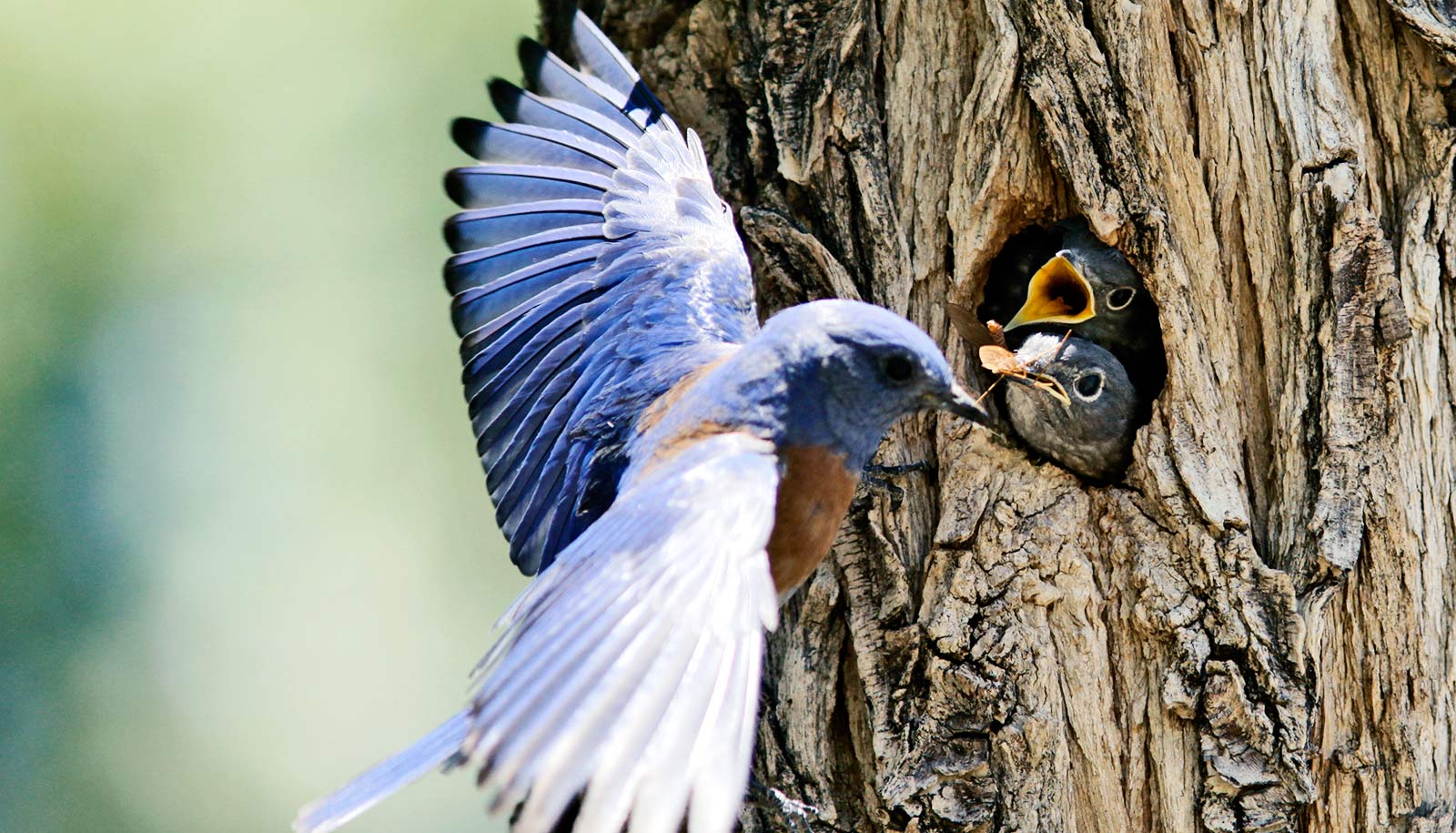Birds exposed to noise pollution created by natural gas compressors show symptoms similar to those humans exhibit when suffering from post-traumatic stress disorder, researchers report.
In a new study, researchers found that adults and nestlings of three species showed multiple signs of chronic stress caused by noise pollution, including skewed stress hormone levels, possibly due to increased anxiety, distraction, and hypervigilance.
The study is the first to test the relationships between noise, stress hormones, and fitness in animals that breed in natural areas with unrelenting, human-made noise.
‘Acoustic blanket’
Constant noise could be acting as an “acoustic blanket,” muffling the audio cues birds rely on to detect predators, competitors, and their own species, says Rob Guralnick, associate curator of biodiversity informatics at the Florida Museum of Natural History and coauthor of the study, which appears in the Proceedings of the National Academy of Sciences.
Unable to discern whether their environment is safe, mother birds must choose between staying on guard at the nest and finding food for their young.
“…that’s a pretty damning picture of what human-made noise can do to natural populations of animals.”
Nestlings in the noisiest environments had smaller body sizes and reduced feather development, potentially diminishing their odds of survival. Hatching rates in western bluebirds—the most noise-tolerant species studied—dropped in response to noise.
“These birds can’t escape this noise. It’s persistent, and it completely screws up their ability to get cues from the environment,” Guralnick says. “They’re perpetually stressed because they can’t figure out what’s going on.
“Just as constant stress tends to degrade many aspects of a person’s health, this ultimately has a whole cascade of effects on their physiological health and fitness,” he says.
Researchers led by Nathan Kleist, then a doctoral student at the University of Colorado Boulder, set up 240 nesting boxes staggered at precise distances from gas compressors. This allowed the researchers to examine stress responses of nesting birds across a measurable gradient of noise, Guralnick says.
The team tested levels of the stress hormone corticosterone in three species—western bluebirds, mountain bluebirds, and ash-throated flycatchers.
Expecting corticosterone levels to be high, the researchers found the opposite: The louder the noise from gas compressors, the lower the birds’ baseline corticosterone levels. Results were consistent in adults and chicks across all three species.
Hearing and survival
While initially surprising, the findings came into focus when compared with lab studies of chronic stress. Low corticosterone can be a sign that stress is so intense, the body has dialed down the baseline levels of the hormone as a means of self-protection.
“On the surface, you might look at this result and assume this means they are not stressed,” says coauthor Christopher Lowry, a stress physiologist at CU Boulder. “But what we are learning from both human and rodent research is that with inescapable stressors, including post-traumatic stress disorder in humans, stress hormones are often chronically low.”
When testing chicks’ response to a sudden threat, researchers found that the birds’ corticosterone skyrocketed compared with typical high-stress levels and was slow to return to baseline levels. The link between low baseline corticosterone levels and abnormal spikes in acute stressor-triggered corticosterone also parallels previous chronic stress studies on human and rodents, Guralnick says.
Social cues teach baby birds to sing
“This is a neat alignment between two entirely different types of literature—studies about stress and studies about conservation and physiology. The connection between these low and high hormone levels helps explain why data on corticosterone from previous conservation physiology studies seemed to be all over the place. This helps illuminate the underlying pattern and suggests a new paradigm for how noise affects wildlife,” says Guralnick.
Noise levels at natural gas fields are not unusually loud compared with human-made noise in many other parts of the country, which has important implications for protecting wildlife and possibly human health, the researchers say.
“This study shows that noise pollution reduces animal habitat and directly influences their fitness and ultimately their numbers,” Guralnick says. “By doing so, it makes it harder for animals to survive. Taken together, that’s a pretty damning picture of what human-made noise can do to natural populations of animals.”
A 10-decibel increase in noise above natural levels can shrink animals’ listening area by 90 percent, researchers say. In the US, the amount of land area characterized by this moderate noise increase is an estimated 301,532 square miles—greater than the size of Texas.
Birds knew to flee before tornado hit
“Hearing is the universal surveillance system across vertebrates, including humans,” says coauthor Clinton Francis, assistant professor of biology at California Polytechnic State University. “Hearing is also the sense that remains active even during sleep and other instances of unconsciousness.
“Because we and other animals rely on hearing in these capacities, it may not be too much of a stretch to expect similar physiological impacts on humans,” Francis says.
The National Geographic Society, the National Science Foundation, the North American Bluebird Society, and the University of Colorado Graduate School and department of ecology and evolutionary biology funded the work.
Source: University of Florida



